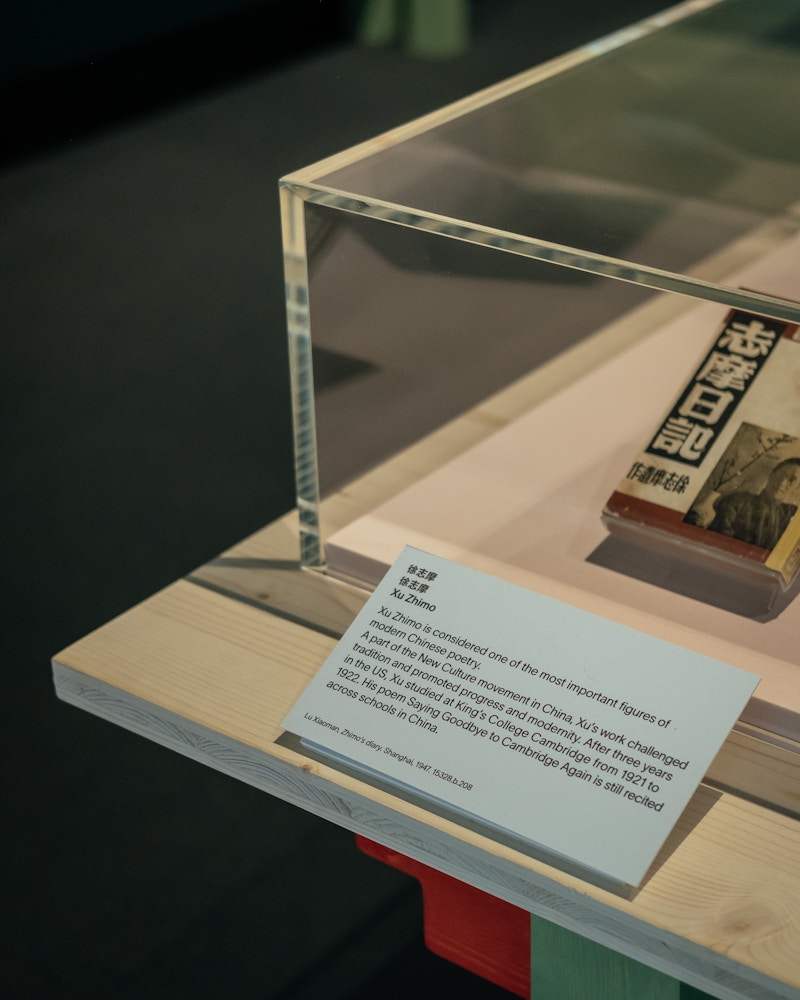Pup Architects in collaboration with Studio Wan designed the exhibition Chinese and British at the British Library, open until April 2023.
The free temporary exhibition showcases a selection of stories of Chinese people and communities in Britain over the last 300 years. Many of the stories showcased in the exhibition are significant, yet not widely known. Amongst others they include early travellers to Britain; the first Chinatowns; the deportation of Chinese seafarers from Liverpool and the service of the Chinese Labour Corps to British forces during WW1.
The exhibition design creates a bright and welcoming environment in which to present a fresh look at this broad content. Expected ‘Chinese’ stylistic tropes are purposefully avoided, instead using references in a playful, contemporary way. The design team’s personal experience of British-Chinese identity was also key to the exhibition’s design.
Within the community there are diverse relationships to both ‘Chinese’ and ‘British’ identities and cultures; which can be nuanced, dynamic and sometimes conflicted. These sensibilities are captured in the exhibition design through layering and transparency. Elements such as a translucent curtain and slatted structures transition from solid to transparent when viewed obliquely or head-on, creating shifting viewpoints throughout the exhibition.
Sustainability was a key influence to the material palette of the exhibition, which favours reuse of existing components; solid timber and boards as opposed to composite products. Within the graphics, the use of plastic substrates is minimised, instead favouring recyclable papers and cards.
Client
Date
2022
Location
London
Chinese and British
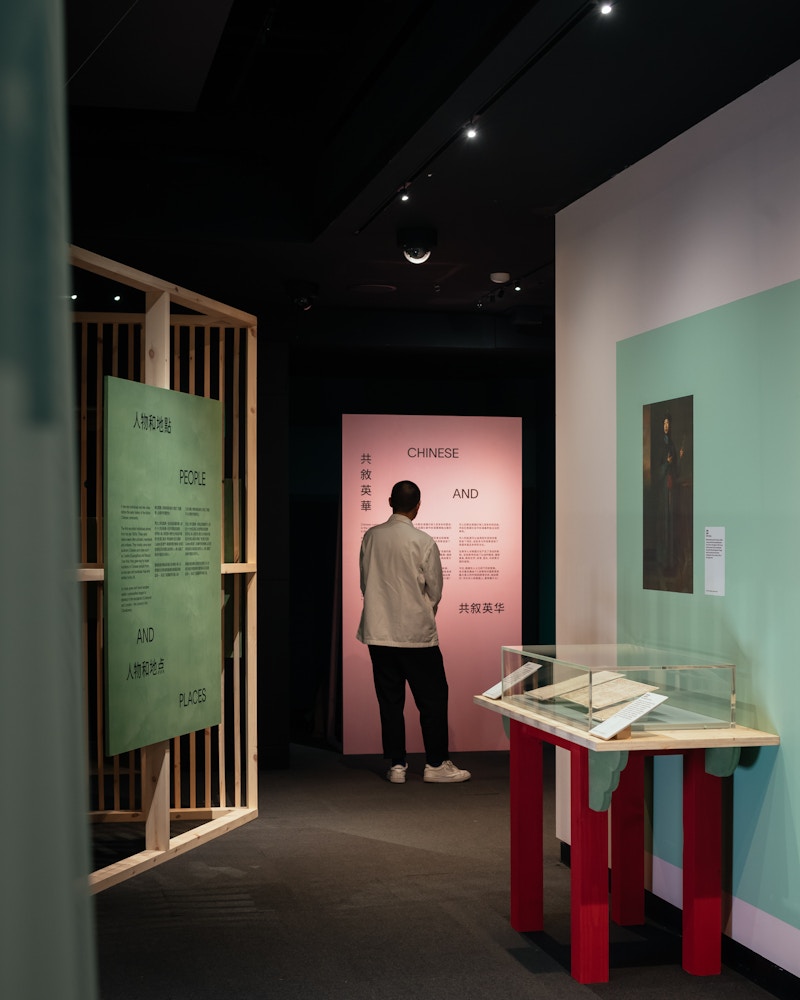
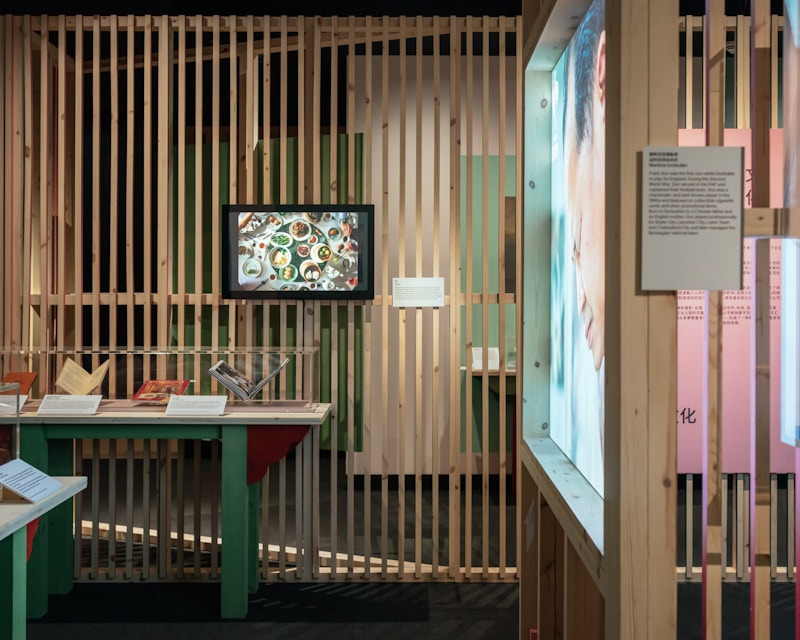

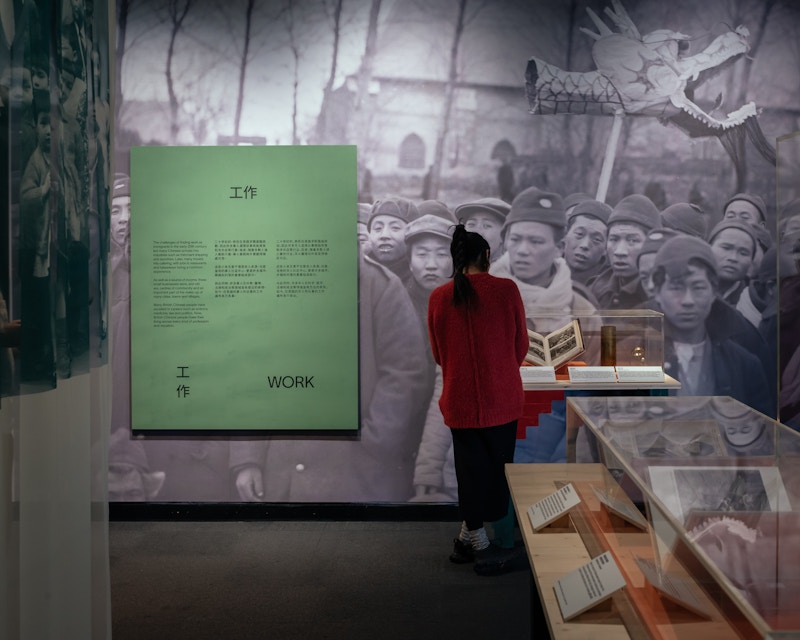
Coloured stains and paints are applied dynamically. The brightly painted edges of the slatted structures cause them to shift colour from one side to another.

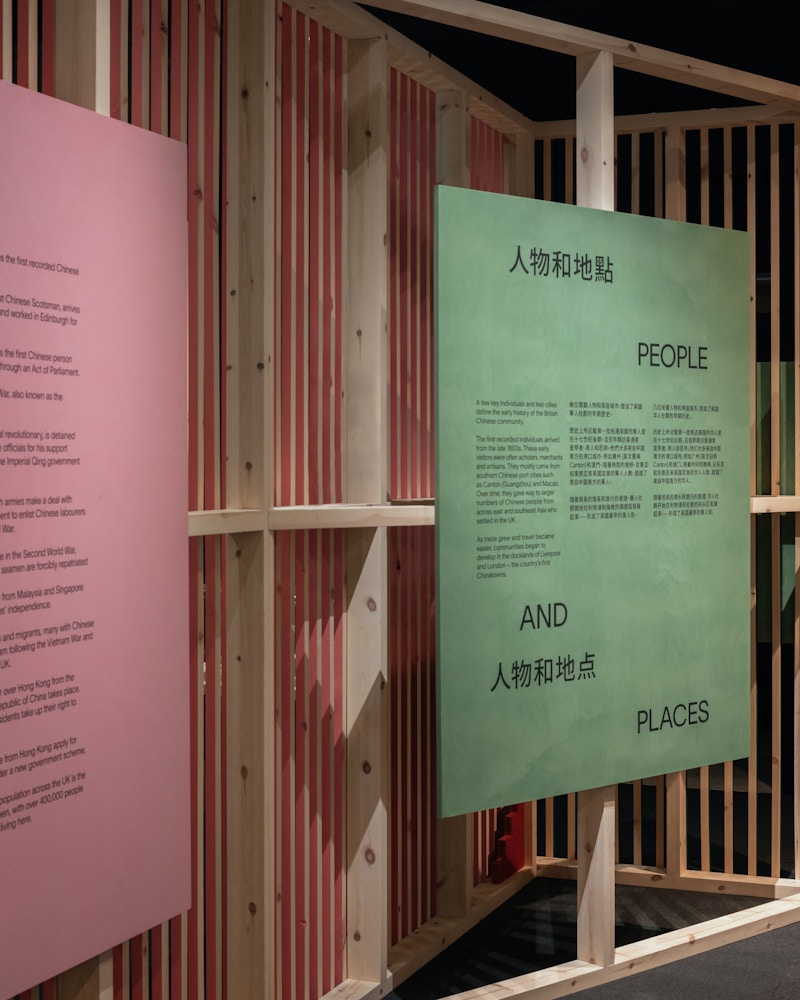
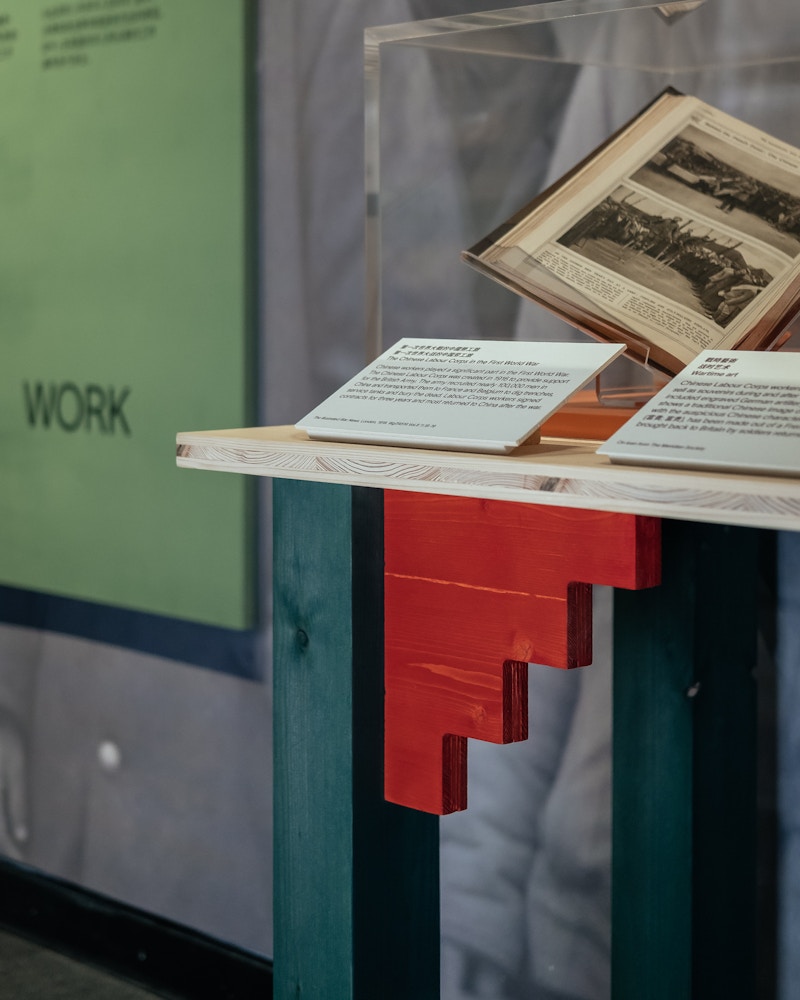
Oversized brackets reimagine elements of Chinese antiquity as motifs that are contemporary and pop.
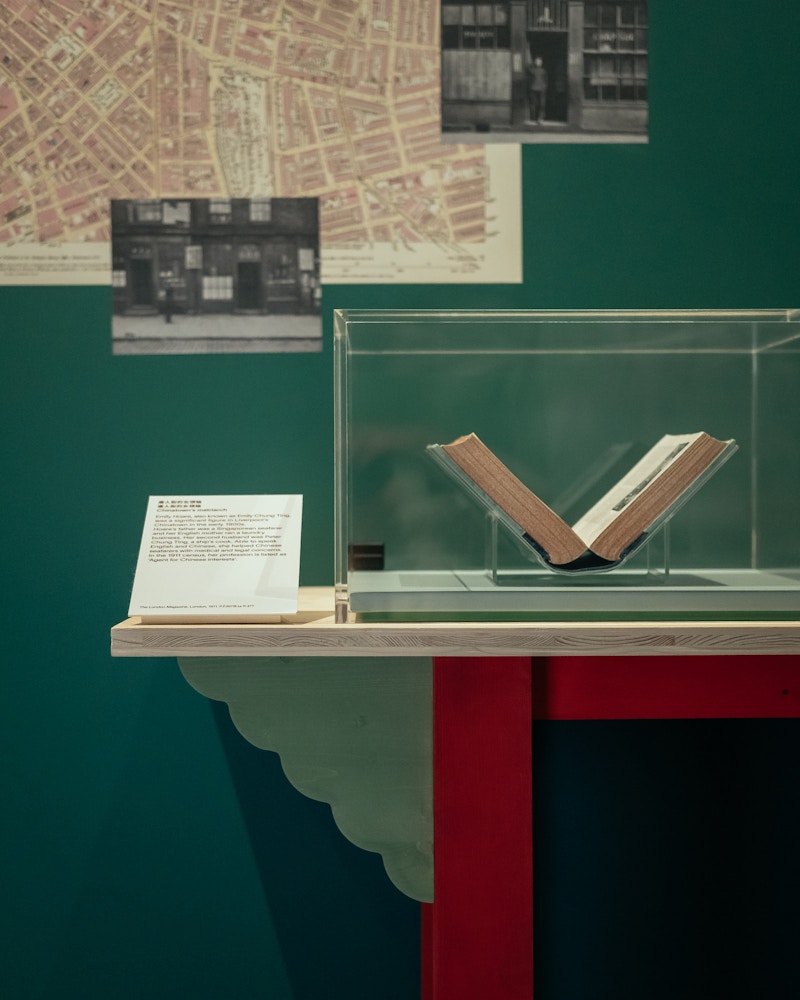
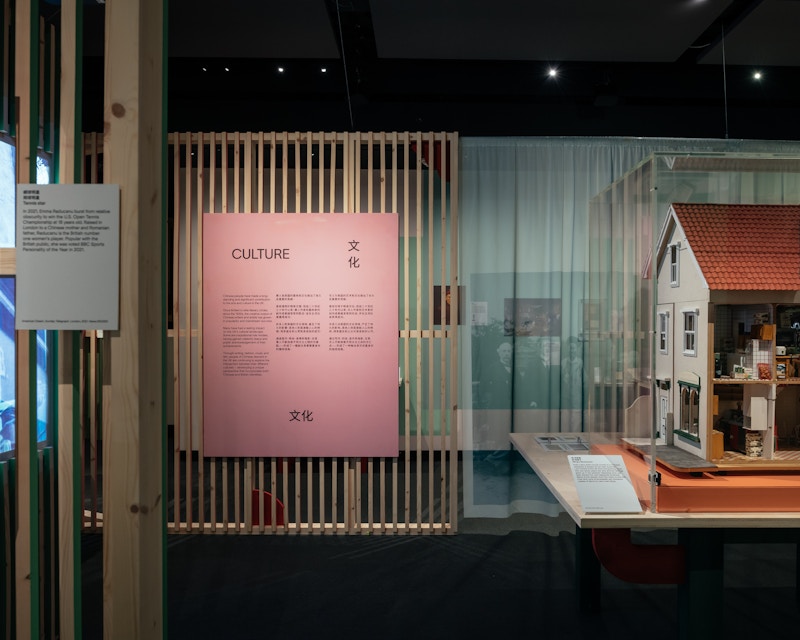
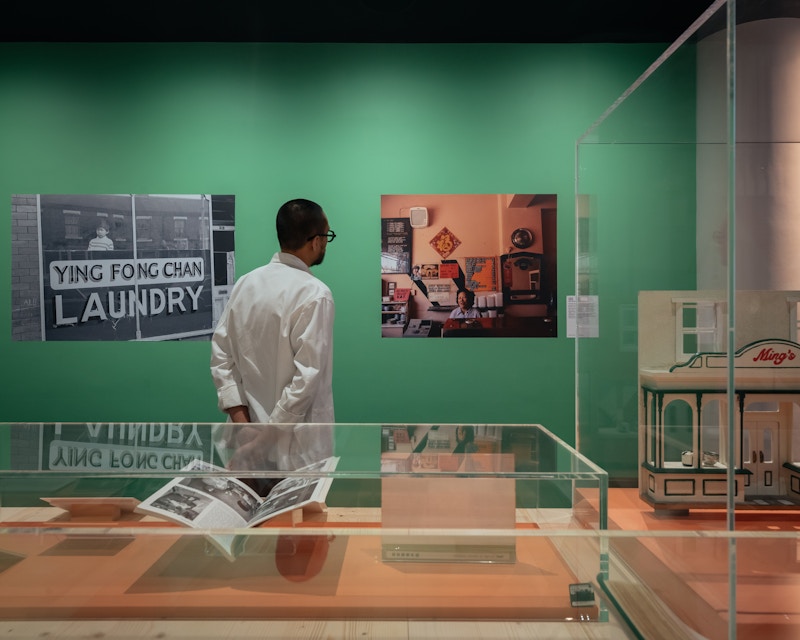
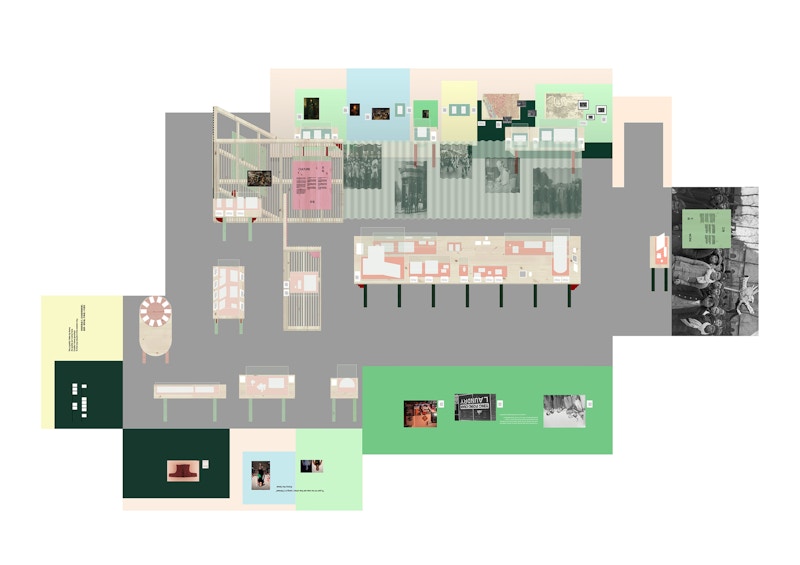
The colour palette is derived from a range of culturally specific objects, materials and places. Layered blocks of colour and flatly applied graphics create a sense of depth and movement to the walls.
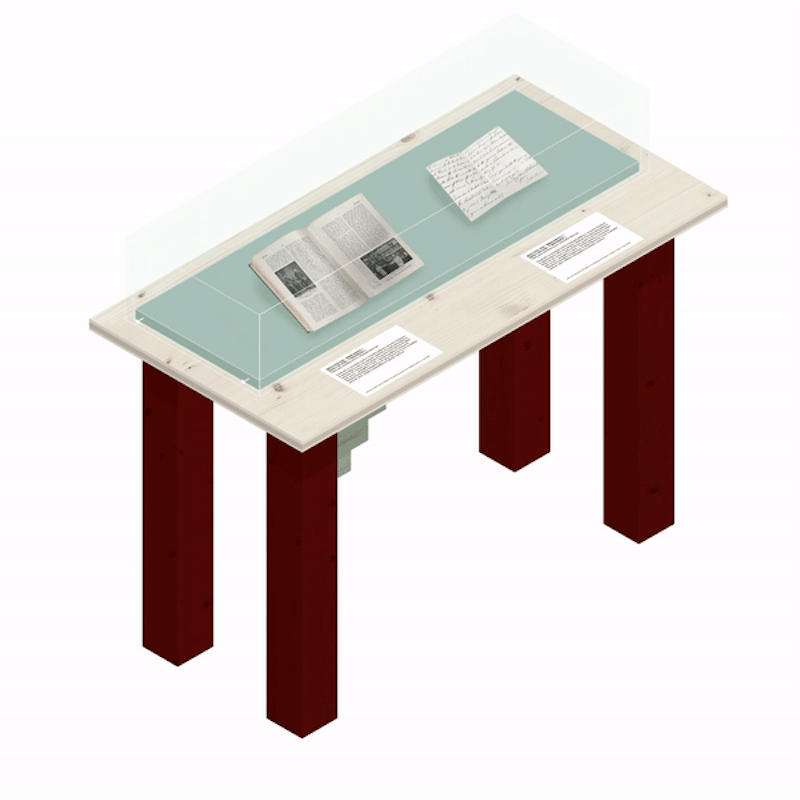
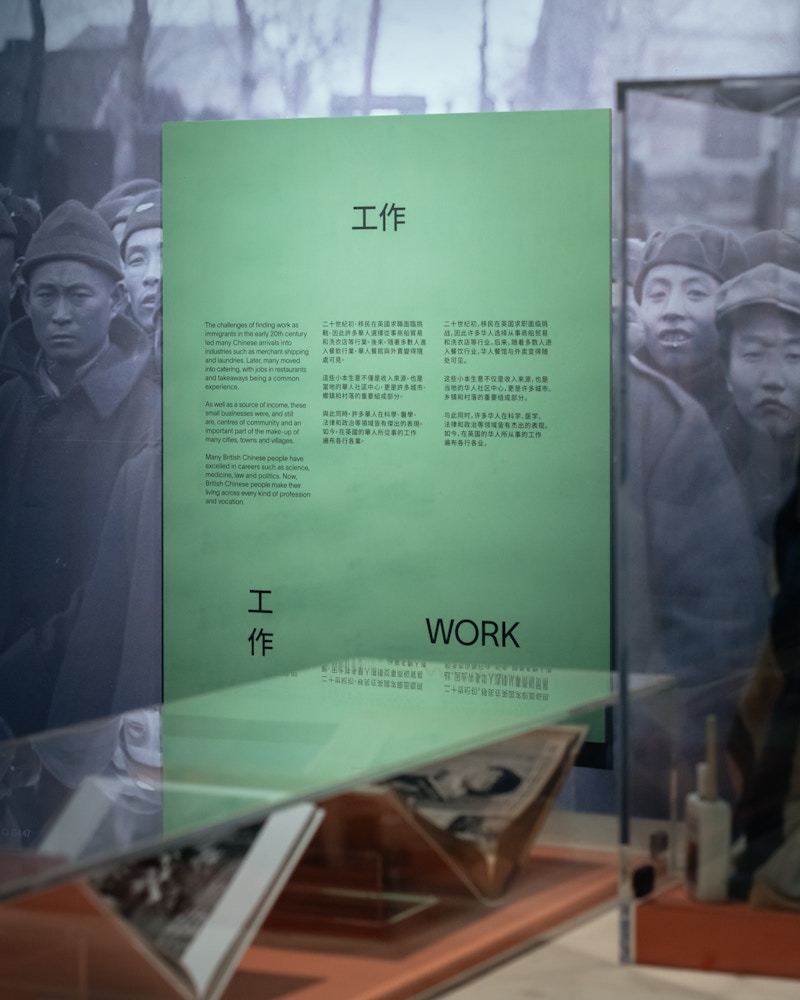
Traditional and Simplified Chinese as well as English text are compositionally placed to create non-hierarchical relationships between the languages. This creates a sense of fluidity and movement rather than binary or oppositional.
